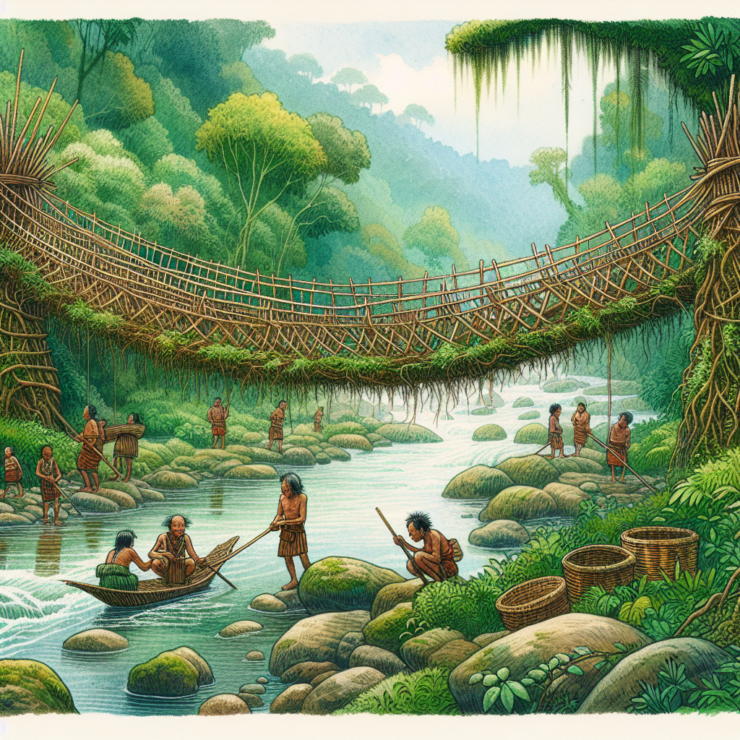Have you ever walked over a bridge made not of concrete and steel, but of living, growing roots? In the heart of Meghalaya, India, the Khasi and Jaintia tribes have mastered an extraordinary technique of bio-engineering, crafting living bridges that span across the region’s abundant rivers and streams. These aren’t ordinary structures; they’re live, growing examples of sustainable architecture that strengthen over time1 .
The Khasi tribes have been developing these living bridges for centuries, utilizing the sturdy aerial roots of the Ficus elastica tree. Guided carefully by hand, these roots grow across rivers and ravines, eventually forming a solid, living bridge that can bear the weight of dozens of people at a time. This remarkable process can take 15 to 30 years to complete, but the result is a living piece of infrastructure that can last for hundreds of years2.
The motivation behind these living bridges is practical: during the monsoon season, Meghalaya, one of the wettest places on Earth, experiences heavy rainfall that can make rivers and streams swell and become treacherous. Traditional wooden bridges would rot or be washed away. In contrast, the living bridges thrive in the damp conditions, growing stronger and more robust with each passing year. The oldest known living root bridge is believed to be over 500 years old, a testament to the durability and longevity of these natural structures3.
Creating a living bridge is a communal effort that requires patience, foresight, and a deep understanding of the natural environment. The people of the Khasi tribe are expert botanists, even if they don’t formally carry the title. They carefully select and nurture the roots, sometimes using hollowed-out trunks of betel nut trees to guide them across the gaps until the roots can anchor themselves securely on the opposite bank. Over generations, these communities maintain and strengthen the bridges, ensuring they continue to serve as vital connections between villages4.
The living bridges of Meghalaya are not only a means of crossing rivers but also an eloquent statement about the possibility of living in harmony with nature. These bridges symbolize a profound respect for the environment, embodying principles of sustainability and ecological stewardship that the modern world is only beginning to grasp. By molding nature’s own materials into necessary infrastructure without harming the ecosystem, the Khasi tribes show us a remarkable alternative path in engineering and architecture5.
Let these living bridges inspire you. They stand as a reminder that solutions to some of our most pressing problems can be found by looking at the wisdom of those who have lived closely with the land for centuries. Embrace creativity, sustainability, and respect for nature, and marvel at what can be achieved when we work with, rather than against, the natural world.
- http://livingbridgesproject.com/blog/2016/4/28/j6rq8jy4hyiw6a3k2tdfutsxs31yur [↩]
- https://www.npr.org/sections/goatsandsoda/2020/08/01/892983791/photos-living-tree-bridges-in-a-land-of-clouds [↩]
- https://www.atlasobscura.com/articles/living-root-bridges-india [↩]
- https://www.nationalgeographic.com/travel/article/footbridges-grow-from-trees-in-meghalaya-india [↩]
- https://www.bbc.com/future/article/20211117-how-indias-living-bridges-could-transform-architecture [↩]








































Add comment